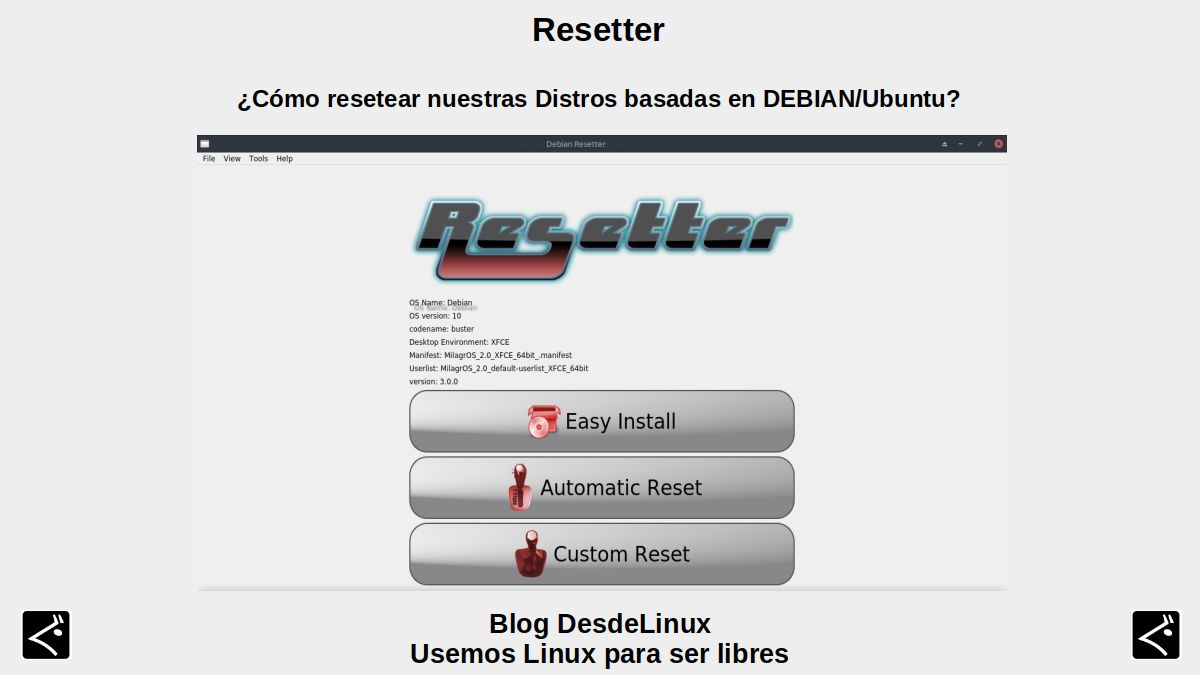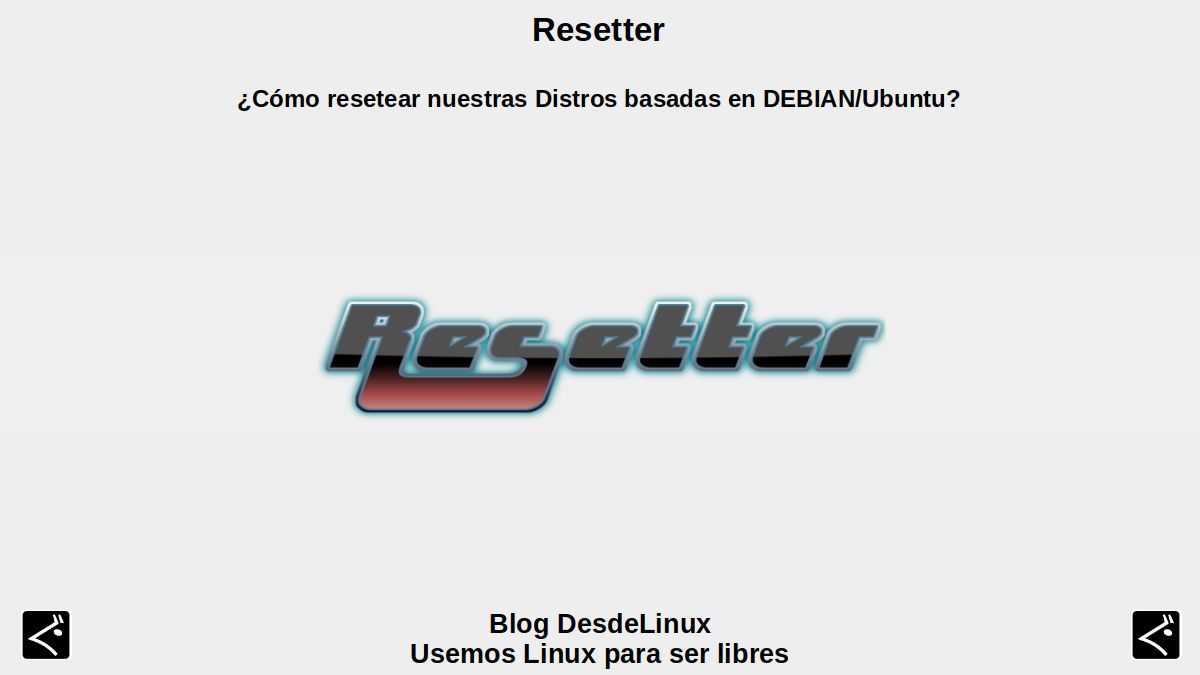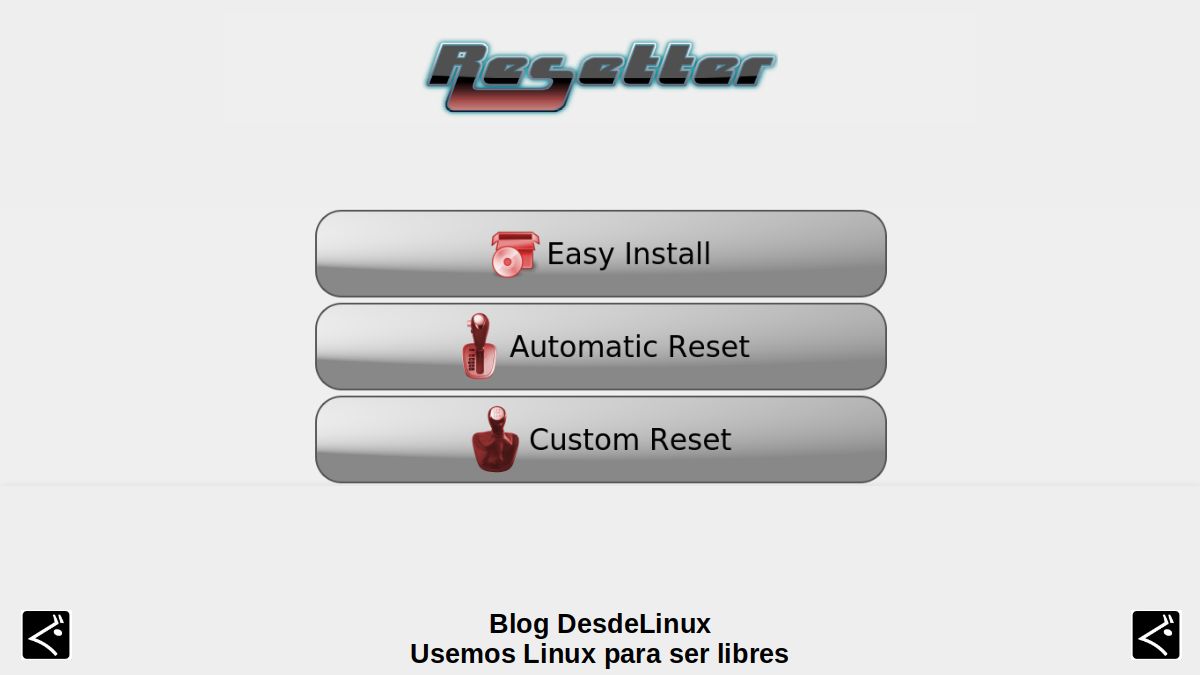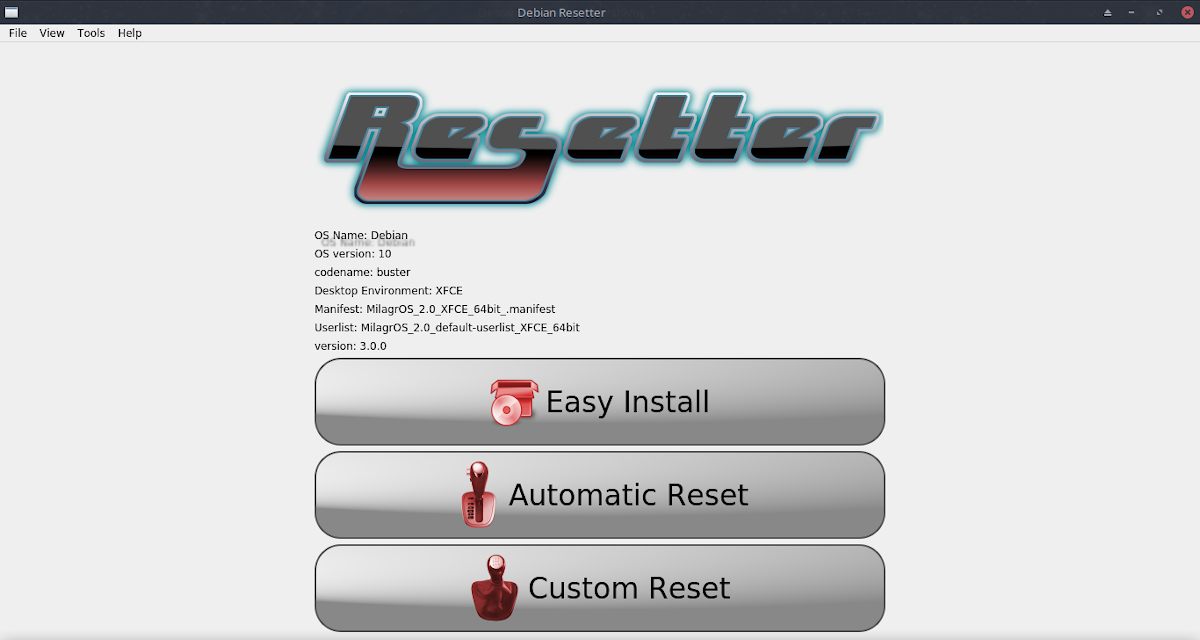
Resetter: How to reset our Debian / Ubuntu based Distros?
Reset, reset, restore or just go back to a initial or default state our GNU / Linux Distros, It is usually for many an essential or at least important task, especially when they are advanced or curious users, who constantly make changes and configurations, or install / uninstall applications very frequently.
Some tend to enjoy native applications on their GNU / Linux Distros, Such as Linux Mint Which includes a snapshot tool non-installable call Timeshift mode: MX Linux with its installable snapshot tool called MX Snapshot. And although, surely some others GNU / Linux Distros They will include similar tools, for an easier and more efficient execution of the same task there is the application called resetter.

In a previous post, called How to restore a Debian / Ubuntu based distro to its original state, almost 3 years ago when Resetter 0.1.3-beta was released, we talked about it. And in this we describe resetter on the table:
"An open source tool, developed in python and pyqt that allows us to restore a Debian or Ubuntu based distro to its original state, without the need to use a distro image or complex package removal processes and more. To restore our distro, the tool uses the update manifest of each distribution which compares it with the list of currently installed packages, installed packages that differ from the manifest are uninstalled and can be installed in the future".
In addition, in this publication we very clearly describe the main options of the same, which to this day are still preserved.

Resetter: The easiest way to reset your Linux
Nowadays, resetter goes for the version 3.0.0, although this current stable version was released more than a year ago (1 Jan 2019). And among its novelties are the following:
What's new in Resetter 3.0.0
- Official support for the following Distros:
- Basic OS 5.0
- Deepin OS 15.8, 15.9, 15.10
- DebianGnome 9.6, 9.7, 9.9, 10.0
- Debian-KDE 10.0
- Linux Mint Cinnamon 18.3, 19, 19.1, 19.2
- Linux Mint 18.3 Matte
- Ubuntu Gnome 18.04, 18.10, 19.04
- Unity 16.04
- Parrot OS Mate 4.7
- Code renewed: Totally rewritten in python3 y PyQt5 with new bookstores. Which also corrects many of the problems that the previous version had.
- New options (functionalities): Among those that do include the following:
- User List and Manifest Updater: Options that basically allow building and / or updating the list of current users of the Operating System and installed applications (packages), which could be used to mass install after a restart or a new installation. It can also be used at any time to install a package, among other uses.
- Easy PPA: Option to search in launchpad.net applications containing PPA directly from the reset and install them on the system. It will also take the key from the PPA automatically. This eliminates the need to use a terminal to add PPAs from the LaunchPad making Distros easier to use.
- Package source editor: It is a normal editor that can disable, enable or delete PPA sources from a user's Operating System, but what makes it different from other source editors is that it allows you to search for the PPA that you want to edit.
Adapting its use on an unsupported Distro
Installation on MX Linux 19.1 with XFCE
For installation on my customized and optimized Distro based on MX Linux 19.1 call Miracles 2.0, I followed the official procedure described, that is, the download of the 2 .deb files and their installation with the apt or dpkg command, with the following command commands:
sudo apt install Descargas/add-apt-key_1.0-0.5_all.deb
sudo apt install Descargas/resetter_3.0.0-stable_all.deb
Or simply:
sudo dpkg -i Descargas/*.deb
And finally, the following command command, to resolve any dependency problems in case the message has been displayed in the terminal:
sudo apt install -f
Use in MX Linux 19.1 with XFCE
When the application is running, it cannot correctly detect the manifest file correct nor the user archive. These are saved in the path /home/$USER/.resetter/data/manifests/ y /home/$USER/.resetter/data/userlists/. Therefore, new custom ones can be built that can then be loaded manually using the option File (File) / Open manifest (Open manifest) y Open userlist. To create them, the following command commands can be used:
dpkg-query -W -f='${Installed-Size} ${Package}\n' | awk '{print $2}' > MilagrOS_2.0_XFCE_64bit_.manifest
cat /etc/passwd | cut -d: -f1 > MilagrOS_2.0_default-userlist_XFCE_64bitOnce this is done, it can be used almost completely to Resetter 3.0.0. As shown in the following images:


It is recommended, run the option Custom Reset on GNU / Linux Distros not officially supported and the option Automatic Reset with confidence in the supported Distros.

Conclusion
We hope this "useful little post" about «Resetter», a tool designed to create installation files of applications under the format AppImage using binary files (tar.gz, .deb or .ppa) existing and a description file .yml to achieve conversion; be a lot interest and utility, For the whole «Comunidad de Software Libre y Código Abierto» and of great contribution to the diffusion of the wonderful, gigantic and growing ecosystem of applications of «GNU/Linux».
And for more information, always do not hesitate to visit any Online library as OpenLibra y jedit to read books (PDFs) on this topic or others knowledge areas. For now, if you liked this «publicación», don't stop sharing it with others, in your Favorite websites, channels, groups, or communities of social networks, preferably free and open as Mastodon, or secure and private like Telegram.
Or simply visit our home page at DesdeLinux or join the official Channel Telegram from DesdeLinux to read and vote for this or other interesting publications on «Software Libre», «Código Abierto», «GNU/Linux» and other topics related to «Informática y la Computación», and the «Actualidad tecnológica».